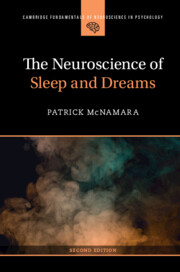Book contents
- The Neuroscience of Sleep and Dreams
- Cambridge Fundamentals of Neuroscience in Psychology
- The Neuroscience of Sleep and Dreams
- Copyright page
- Dedication
- Contents
- Figures
- Tables
- Preface
- Acknowledgments
- Chapter One What Is Sleep?
- Part I Sleep
- Chapter Two From Biological Rhythms to the Sleep Cycle
- Chapter Three Expression of Sleep across the Human Lifespan
- Chapter Four Characteristics of REM and NREM Sleep
- Chapter Five Sleep Disorders
- Chapter Six Theories of REM and NREM Sleep
- Part II Dreams
- References
- Index
- References
Chapter Two - From Biological Rhythms to the Sleep Cycle
from Part I - Sleep
Published online by Cambridge University Press: 06 April 2023
- The Neuroscience of Sleep and Dreams
- Cambridge Fundamentals of Neuroscience in Psychology
- The Neuroscience of Sleep and Dreams
- Copyright page
- Dedication
- Contents
- Figures
- Tables
- Preface
- Acknowledgments
- Chapter One What Is Sleep?
- Part I Sleep
- Chapter Two From Biological Rhythms to the Sleep Cycle
- Chapter Three Expression of Sleep across the Human Lifespan
- Chapter Four Characteristics of REM and NREM Sleep
- Chapter Five Sleep Disorders
- Chapter Six Theories of REM and NREM Sleep
- Part II Dreams
- References
- Index
- References
Summary
All terrestrial animals live their lives embedded in the twenty-four-hour light-dark cycle. How does the sleep cycle fit into the larger twenty-four-hour or circadian cycle? The current belief is that a brain-based circadian pacemaker or master clock is synched-up with, or entrained to the twenty-four-hour light-dark cycle such that it sends chemical messages to the rest of the brain that signal changes in the daily light–dark cycle. As light turns to dark and dark turns to light the master clock sends the appropriate chemical messenger into the appropriate brain regions that turn sleep on and off. A homeostatic process linked to the pacemaker region regulates (with the help of pacemaker genes) or influences the amount and timing of sleep, possibly via accumulation of adenosine or some other neuroendocrine or neurochemical substance that signals sleep need and sleep debt. Adenosine accumulates as the individual goes about his waking day and with it the urge to sleep increases until sleep occurs and adenosine levels reset. The circadian pacemaker regulates the release of adenosine and related chemical messengers via its control of the neuroendocrine hypothalamic region that contains the master clock.
- Type
- Chapter
- Information
- The Neuroscience of Sleep and Dreams , pp. 29 - 44Publisher: Cambridge University PressPrint publication year: 2023

